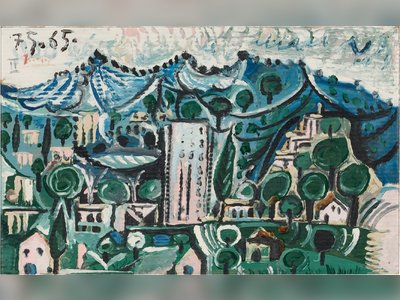Survivors Of COVID-19 May Hold The Key For Everyone Else - In Their Blood
In the absence of a cure or vaccine for the coronavirus, a group of scientists is searching for a fast solution in an unconventional place: the veins of people who have recovered.
Starting in New York City hospitals this week, and soon in dozens of medical centers across the United States, researchers will start drawing blood from COVID-19 survivors, who have antibodies their bodies made to fight the disease. They'll then isolate their plasma, the liquid part of blood that contains antibodies. And in a process called “convalescent plasma therapy,” their antibodies will be transferred to others, either to protect them against getting infected or to boost the immune systems of those who are already sick.
This highly experimental therapy hasn’t been proven to work against the coronavirus, but preliminary research out of China suggests that it has helped a small group of patients recover. It’s also seen some success in past infectious disease outbreaks, including in fighting the coronavirus that caused the SARS outbreak.
Acknowledging the “public health emergency” wreaked by the new coronavirus, the FDA on Tuesday opened up access for doctors to use the therapy on a case-by-case basis to treat patients in severe or life-threatening condition.
As of Friday, the coronavirus has infected more than half a million people worldwide, including 92,000 and counting in the US. A vaccine is in the works but won’t be ready for the general population for at least a year and a half, and drugs are in clinical trials that might take 8 to 10 months to produce convincing results. Convalescent plasma therapy, if it works, could be a more immediate treatment with a relatively abundant supply source: to date, thousands of people have recovered.
“This is your by far fastest shot-on-goal,” Michael Joyner, a Mayo Clinic anesthesiologist who is helping lead what’s being called the COVID-19 Convalescent Plasma Project, told BuzzFeed News. “If we can just keep a small fraction of people headed to the ICU out of the ICU, we’ll be beneficial to the whole ecosystem.”
The effort is being spearheaded by Arturo Casadevall, chair of molecular microbiology and immunology at the Johns Hopkins Bloomberg School of Public Health, who first floated the idea to “protect the vulnerable with the antibodies in the blood of those fortunate enough to have recovered” in a Feb. 27 op-ed in the Wall Street Journal. Thirty to forty academic medical centers have since jumped on board, including Johns Hopkins, the Mayo Clinic, Washington University at St. Louis, Albert Einstein College of Medicine, and Mount Sinai, according to Joyner.
In the world of clinical research, where trials are usually planned out months to years in advance, the grassroots collaboration has sprung up unusually quickly as scientists have seen the enormous need for solutions. “Our conference calls are getting toward the limit,” said Joyner, whose lab has made a total switch from studying exercise physiology to focusing on the coronavirus. He said conference calls to discuss the treatment often include up to 300 researchers.
A few institutions are planning to treat patients immediately, and researchers are working to get approval for formal, rigorous clinical trials that will collect data about the therapy, beginning with whether it is safe. Mount Sinai, which along with other New York hospitals has been besieged by COVID-19 cases, started the treatment this week and is soliciting blood donations from recovered patients. Albert Einstein College of Medicine expects to begin trials within three to four weeks.
Adult patients will be the first group treated. One recoveree can provide enough plasma for one or two patients, depending on their size, and they can also donate their blood multiple times, Joyner said. Their blood must also be screened to ensure that it doesn’t contain the virus and other toxins. Joyner said the plasma would be transfused to recipients just like it is in regular surgery.
But plasma-derived therapy is restricted by the number of able and willing donors. A spokesperson for Mount Sinai did not respond to questions about how many volunteers have signed up so far.
The goal for now is to help stem the tide of hospitalizations threatening to overwhelm the health care system.
“Historical evidence suggests if you can give it to people relatively early in the course of the hospitalization, before they’re in the ICU, that might be the sweet spot for administration,” Joyner said.
The treatment could also be preventative. Later, the researchers hope to investigate whether the therapy could immunize health care workers against the disease. Doctors and nurses without adequate protective gear are treating infected patients, in turn getting sick themselves and sometimes dying.
But there are concerns about whether the treatment will work. One basic question hinges on the immunity of anyone who recovers: While to date, scientists haven’t seen definitive evidence of a person who’s gotten infected twice, they also don’t know how long people stay immune to the new coronavirus. There are also risks that the transfusions could inadvertently trigger the recipient’s immune system or sicken them more.
The idea of plasma-derived therapy is more than a century old, and in 1934, it stopped a measles outbreak at a Pennsylvania boarding school. More recently, it’s been shown to work against SARS, MERS, and the H1N1 flu strain. An analysis of 32 studies showed that in cases of SARS infections and severe flu, the therapy improved patients’ survival rates by a statistically significant amount, compared to a placebo treatment or no treatment. It did not significantly improve survival, however, for Ebola patients.
In China, scientists have started experimenting with convalescent plasma therapy on COVID-19 patients - to early signs of success. On Friday, in a preliminary report in the journal JAMA, researchers provided details about five critically ill people who underwent the therapy in Shenzhen Third People’s Hospital. Within days, their fevers and other symptoms improved and their viral load declined within two weeks. Nine days after the transfusions, four of the patients no longer needed mechanical ventilation. Three of the patients have been discharged from the hospital and the other two are in stable condition 37 days post-transfusion, according to the report.
Other hopeful data was shared in a preliminary paper posted online earlier this week by researchers from academic institutions and companies in Beijing, Wuhan, and Shanghai. According to the report, which has not been peer-reviewed, a group of 10 severely ill patients were given donor plasma. Their symptoms improved significantly within three days, and the virus dropped to undetectable levels in seven patients over the course of six days.
Both of the Chinese papers reported on the results of small groups of patients given the plasma therapy, and neither included a control group, meaning it’s not possible to determine whether the treatment truly worked or if they have might have recovered without it. The patients were also taking other antiviral medications that likely influenced their recovery.
Still, the data seems encouraging. “If the results of rigorously conducted investigations, such as a large-scale randomized clinical trial, demonstrate efficacy, use of this therapy also could help change the course of this pandemic,” wrote two pathologists at Emory University School of Medicine in an editorial about the JAMA report.
Linqi Zhang, director of the Comprehensive AIDS Research Center at Tsinghua University, was not involved in either paper but has been studying antibodies generated by infection with the coronavirus. “Overall, if proven safe and efficacious, plasma therapy provides a valuable and short-term solution [for] COVID-19 patients, particularly for those severe patients,” he said by email.
And Jared Evans, a virologist and infectious disease expert at Johns Hopkins University’s Applied Physics Laboratory who is not involved in the US plasma studies, said that research out of China looks “promising.”
Much remains unknown, however, about the biological mechanisms involved. The body generates multiple kinds of antibodies in response to an infection, and scientists are studying how their effects differ against the virus known as SARS-CoV-2. “We’re not sure if there’s a particular type of antibody that is able to confer protection,” Evans said.
There are risks, too, Evans cautioned. If someone receives a transfusion that doesn’t have enough antibodies in it to neutralize the virus, it could actually worsen the infection. If given to people with a suppressed immune system or a separate underlying infection, it could even make them sicker.
Evans and his team have been studying the virus’ genome, and their findings bode well for an eventual vaccine that could confer immunity to the public at large. So far, the virus does not appear to have mutated in significant ways, which would make it a relatively straightforward target for a vaccine. (In comparison, there are more than 100 different strains of the common cold, and every year a new flu vaccine is developed to protect against the strains that will likely be most common that season.)
At least eight vaccines are under development by major drug firms, with preliminary human safety results from a test on one from Moderna Therapeutics expected in April. National Institutes of Allergy and Infectious Diseases Director Anthony Fauci told BuzzFeed News in February that mass production of a vaccine - if everything goes right - will take at least 18 months.
For now, the COVID-19 Convalescent Plasma Project is rushing to provide a stopgap solution. “Then the biotech cavalry can come to the rescue,” Joyner said.













